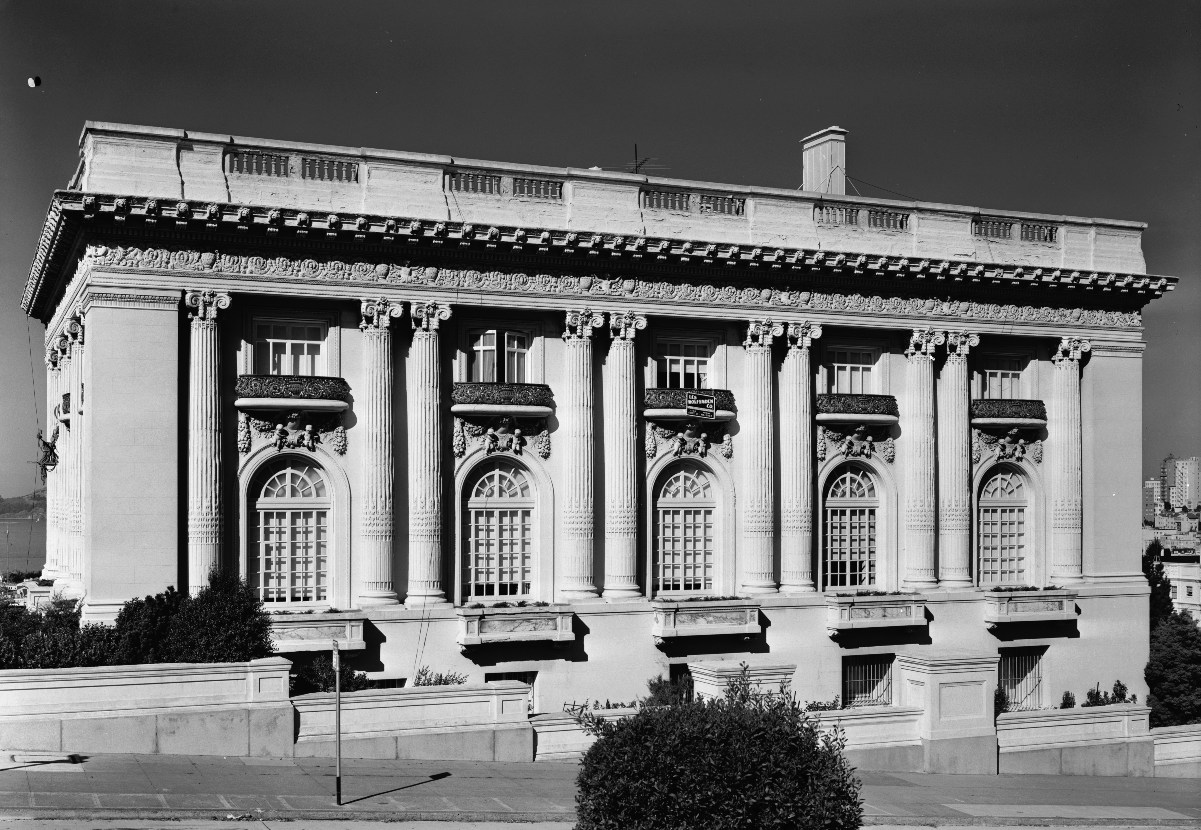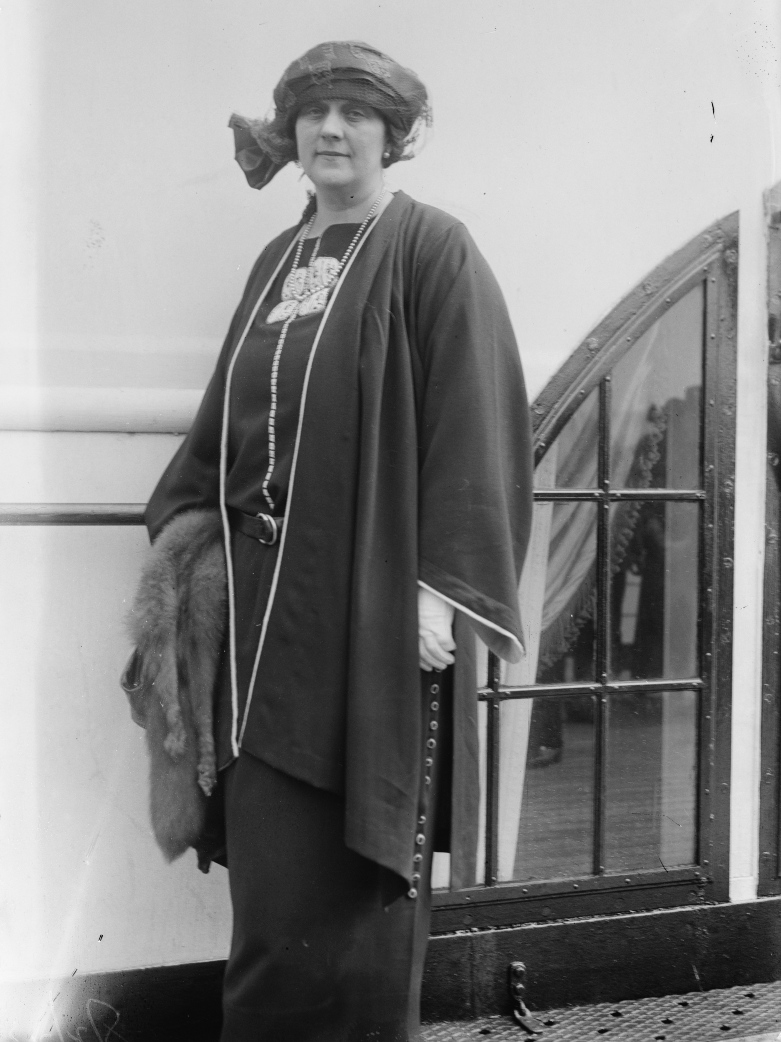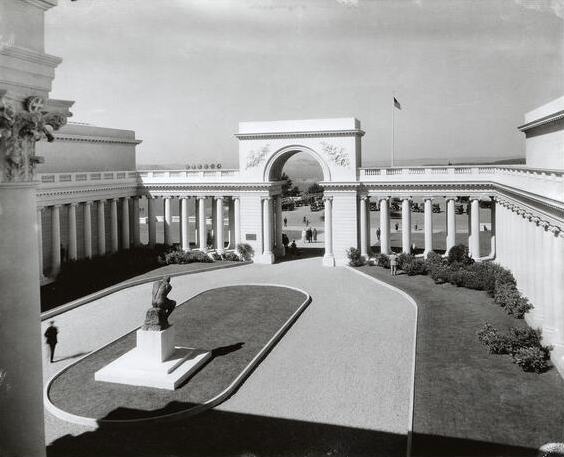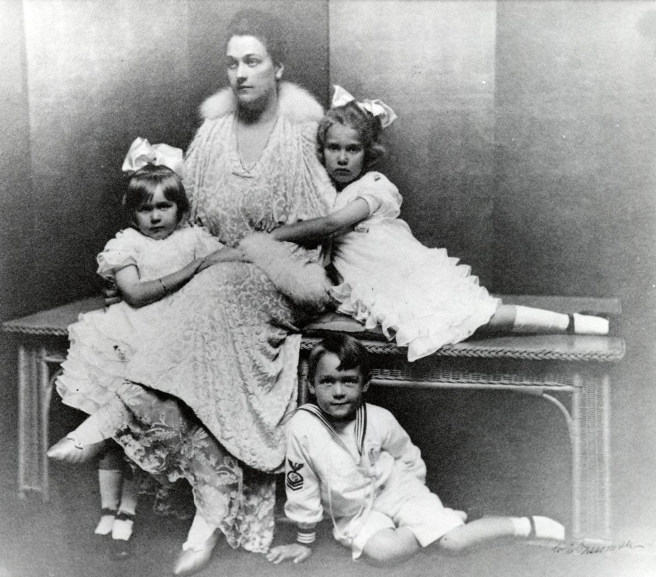Alma de Bretteville was born on March 24, 1881, but was not introduced to the city at a debutante ball or in the turn-of-the-century celebrity gazettes. However, her name may have impressed the small circle of San Francisco residents with a penchant for aristocratic particles. Born to Danish parents who had become naturalized American citizens, Alma descended from an old French family who had fled to Copenhagen during the Revolution. Her ancestors included a great-uncle who served as a general under Napoleon III. Yet the American Brettevilles were as penniless as they were snobbish. Her father, Viggo, had hoped for a career as a diplomat. But in California, he found himself forced to work to feed his four children. Records have been found of his jobs as a vegetable seller, a language professor, and an office clerk. Meanwhile, Alma’s mother Mathilde was the one who actually kept the family going. She worked tirelessly at a laundry, a bakery, and even a massage salon. Needless to say, the family was considered by polite society as extremely suspicious. And things went from bad to worse in late 1901 when Alma’s name made headlines in the local press.
At the age of 20, she sued Charles J. Anderson, a fortysomething prospector who had made his fortune in Alaska, for not keeping a promise to marry her made during a five-week fling… The newspapers portrayed the young woman as an “artist”; she acted a little, dabbled in painting, and occasionally posed for sculptors (her figure supposedly inspired the bronze statue of Victory atop the monument on San Francisco’s Union Square). In an attempt to restore her reputation, Alma demanded the stupefying sum of 50,000 dollars (1.5 million dollars today). The press had a field day, and the city was divided. Is it more scandalous to withdraw a marriage proposal after spending 1,500 dollars on gifts (50,000 dollars today), or to take an ex-future husband to court? Anderson was eventually ordered to pay 1,250 dollars to the young woman he had led on, and whose reputation was forever besmirched.
The First Sugar Daddy
In 1903, probably thanks to a relative working for the Spreckels Sugar Company in Hawaii, Alma met a certain Adolph B. Spreckels, the son of a German immigrant, who had made millions in the sugar business. At 46, he already managed a large number of refineries and had his own shipping company – making him one of the richest men in the American West. This longstanding bachelor fell head over heels for the voluptuous Alma, a woman hoping to improve her social standing and develop her education, and who made less fuss than other young women. What’s more, he too had suffered from high society looking down on his father’s modest origins.
Thanks to her “sugar daddy,” as she nicknamed him (this is allegedly how the expression was coined), Alma was able to devote her time to painting and taking family trips to her ancestral lands. However, a wedding was a long time coming. It was not until June 1908, in total secret and far from prying eyes at Philadelphia City Hall, that she finally became Mrs. Spreckels. When news reached the West Coast several months later, San Francisco was in a fluster. The smart set now had to contend with this giant and her gargantuan appetite, who adored cocktails, winked at all those around her, and had a habit of taking her shoes off in public to air her feet.

Despite three successive pregnancies, Alma threw herself into a venture designed to impress those who had rejected her – starting with the de Young family, major figures in San Francisco life. As everyone saw her as a social climber, she decided to show what wealth could achieve, regardless of whether it was old or new. In December 1910, the first stone of what would become one of the largest private residences in the United States, the Spreckels Mansion, was laid at 2080 Washington Street in the Pacific Heights neighborhood. And as nothing was too sublime for this neoclassical temple, Alma traveled to France in the spring of 1914 to purchase the finest 18th-century furniture and artwork available on the market. During her visit, she met American artist Loïe Fuller, whose performances combining modern dance and interplaying electric lights had Paris in raptures. Through her, Alma was introduced to sculptor Auguste Rodin, then aged 74, and became his ambassador in the United States.
A French Palace in San Francisco
The Panama-Pacific International Exposition opened in San Francisco in February 1915. A total of 34 countries took part in the event, and Alma was among the leading figures. She had acquired a dozen sculptures by Rodin, and thanks to Loïe Fuller, the artist had agreed to loan a number of drawings and plaster works. When Alma visited the French Pavilion, a replica of the Hôtel de Salm, the Parisian palace used as the headquarters of the Légion d’Honneur since Napoleon, she said that it was quite simply the most beautiful monument ever created. And as the replica was supposed to be destroyed after the exhibition, she made her husband promise to make a permanent version to be gifted to the city of San Francisco.


This was a way for her to shine among her American contemporaries, cleverly remind everyone of her French origins, and humiliate the de Youngs and their little museum in the Golden Gate Park. Almost nine years later, on November 11, 1924, the California Palace of the Legion of Honor was finally inaugurated. It was dedicated to the memory of the 3,600 Californian soldiers killed for their country during the Great War and buried in France. More than 700 works purchased or on loan from the finest European collections were exhibited throughout 19 galleries. This was probably the biggest exhibition ever created in the state. But on the day of the inauguration, which she had planned during countless trips to Europe and by spending enormous amounts of money, Alma was in mourning. Adolph had died a few months earlier at the age of 67, leaving his wife with a colossal fortune. However, she was also more alone and against the world than ever, and would even often quarrel with her own children. She would have loved her late husband to have seen her wearing the medal of the Légion d’Honneur, which was awarded to her on the day the palace opened.
Life Continues
At 43, Alma’s relentless energy exhausted both her friends and her staff, but she remained determined to pursue the projects she had started with her husband. She was tireless, never refusing a trip to Europe or a meeting with artists and patrons, and would think nothing of spending more to develop the precious collections that she amassed for the city’s residents – such as the museum created in Lincoln Park. As for romance, she considered it occasionally, particularly on cold nights, but cigarettes, the martini constantly held in her hand, and her relentless appetite slowly transformed her figure, while she continued to burst the seams of norms and conventions. What’s more, she had little time for such trifles as love.

Since Adolph’s death, she had assumed a new role as a businesswoman to manage the family’s fortune. She accepted the mission willingly, but with the same trademark excessive character. On a whim, she sold the two San Diego newspapers founded by the Spreckels. Soon after, she liquidated the Oceanic Steamship Company. Even the hotels she had inherited met the same fate! Meanwhile she acquired a château near Paris, which she sold shortly after, and fell in love with the Samarkand, a palace hotel in Santa Barbara. She tried her best to make it operational and profitable, but then sold it and bought a farm instead… At heart, Alma was at her most effective in the art world, in which she had honed her talents for obtaining anything she wanted. Look no further than the Museum of Art in Maryhill, Washington, which would never have opened without her help.
A Flash in the Dark
In the end, just when she least expected it, she fell in love with Elmer M. Awl, a sort of debonaire cowboy eight years her junior, who liked good food, bawdy jokes, and wore a Stetson like no other. Alma was starstruck. One night in February 1939, after countless martinis, Alma set out for Reno City Hall with her latest catch on her arm. Embarrassed by her generally poor luck in human relationships and in her love life, Alma confused marriage with a service agreement. Elmer was sent to Santa Barbara to manage his wife’s business dealings until October 1943, when she discovered that her beau was having a passionate affair with one of her nieces whom she had taken under her wing. The contract was terminated. Alma turned once again to her collections and her work as a patron, and fought to secure the launch of the San Francisco Maritime Museum in 1951 – her final project. Despite attempting to get back on her feet and emerge from her self-imposed confinement in the late 1950s, Alma ultimately gave up and neglected her health. She died on August 7, 1968, at her home at the age of 87.
In 1972, the city of San Francisco decided to combine the California Palace of the Legion of Honor and the de Young Museum. “Only over my dead body will there be a merger,” Alma had declared upon first hearing of the project. Ever since the move, it is said that on certain evenings, loud cursing in English, Danish, and French can be heard ringing through the corridors of the vast, neoclassical building overlooking the Pacific Ocean…
Article published in the June 2022 issue of France-Amérique. Subscribe to the magazine.












